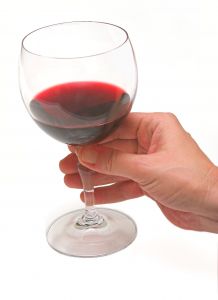 You cannot go to France without experiences (and hopefully enjoying) the amazing food and wine. Wine is such an important part of the country’s national pride and identity that many French simply do not sit down to a meal without a bottle on the table.
You cannot go to France without experiences (and hopefully enjoying) the amazing food and wine. Wine is such an important part of the country’s national pride and identity that many French simply do not sit down to a meal without a bottle on the table.
France has a long history with wine production dating back to Roman times. The names of many styles of wines are synonymous with various regions of France. With a growing and increasingly competitive world market, however, France has made huge efforts to keep these names for truly French wines (e.g., sparkling white wine is only Champagne when it comes from Champagne, France).
Competing with Italy for the world’s largest wine production, France has over 2 million acres of vineyards and produces 7 to 8 billion bottles of wine per year. This means you’ll come across a lot of French wines both on your trip to France, and back at home. However, it should be noted that while in France, with the exception of Paris, you’ll be drinking wines from whatever region you’re in. They’re big on regional terroir pride.
While there are many varieties of wine coming from the famous wine producing regions of France, there are four major categories of French wines that are important to understand before you go looking for that bottle of Bordeaux.
The French take their wines very seriously. Since 1935, France has had the Appellation d’Origine Contrôlée system, which is governed by a powerful oversight board called the INAO (Institut National des Appellations d’Origine). This is one of the oldest and strictest systems for designation and quality control in the world. Under this system, France established four different quality levels in order to categorize their many wines. This means that no matter what region the wine is from (Bordeaux, Loire, Rhône, Burgundy) or what kind of wine it is (red, white, rosé, sparkling), all wines will fall under one of four categories of quality levels.
Vin de Table: These are entry-level French wines that carry with them only the distinction that they were produced in France. You will often find these types of wines served in carafes in restaurants as the house wine—usually only as “house red” and “house white.” While of the lowest distinction in France, these wines are typically quite good for their low prices and you can usually pick up a bottle of vin de table for only a couple euros.
Vin de Pays: These wines carry the distinction of what region they were produced in (for example, Côtes du Rhône from the Rhône Valley or Vin de Pays d’Oc from the Languedoc-Roussillon region). This distinction allows producers to distinguish what grape varieties were used in production. These wines also must be submitted for wine analysis and tasting to ensure quality. You’ll usually get the biggest bang for your buck with these wines as some of them are exceptionally good without the high price tag of AOC wines.
VDQS (Vin Délimité de Qualité Superieure): This category is often considered the “waiting room” for wines trying to get an AOC rating. While they only account for 2% of total French wines, it is important to understand this category as you can score a very high quality bottle for a lower price.
AOC (Appellation d’Origine Contrôlée): This is highest quality level of French wine, with strict restrictions based on grape varities and winemaking methods. These wines are also subject to tasting and evaluation from the INAO (which is an awesome job if you ask me). In years with favorable vintage conditions, there are usually more AOC-rated wines but this is an increasingly large group of French wines, as vineyards in France are attempting to find their niche in the high quality (and expensive) wine market. 2005 was a particularly favorable year in France, leading to a higher number of vintage AOC bottle ratings. These wines are the most coveted in France.
OK, who’s thirsty? Check out this additional information to round out today’s lesson:
Wine Regions of France
Wine Tasting in France
French Wine Tasting Vacations
How to Make Vin Chaud
French Apéritifs